Aside from cooking and sleeping, one of the biggest questions vanlifers need to answer for themselves is where and how they will use the restroom.
Some vanlifers and full-time RVers choose to go without a bathroom set up to save on space and cost, while others do a full bathroom build-out complete with a flushing toilet.
However, there is a middle ground in the form of composting toilets. These are great for living on the road, whether you’re traveling in a van or an RV.
There are several affordable and low-profile restroom options to choose from when you’re pricing out your RV or van conversion and planning the layout of your vehicle.
What exactly is a composting toilet? It’s commonly supposed that this type of RV toilet smells, but does it actually create odors?
What are the benefits of using a composting toilet in your RV, and why should RVers have one?
You won’t need black water (sewage) tank, but there are lots of reasons why composting toilets are great for RV life.
Here’s our reasoning and a rating of the best composting toilet for RVs or campervans.
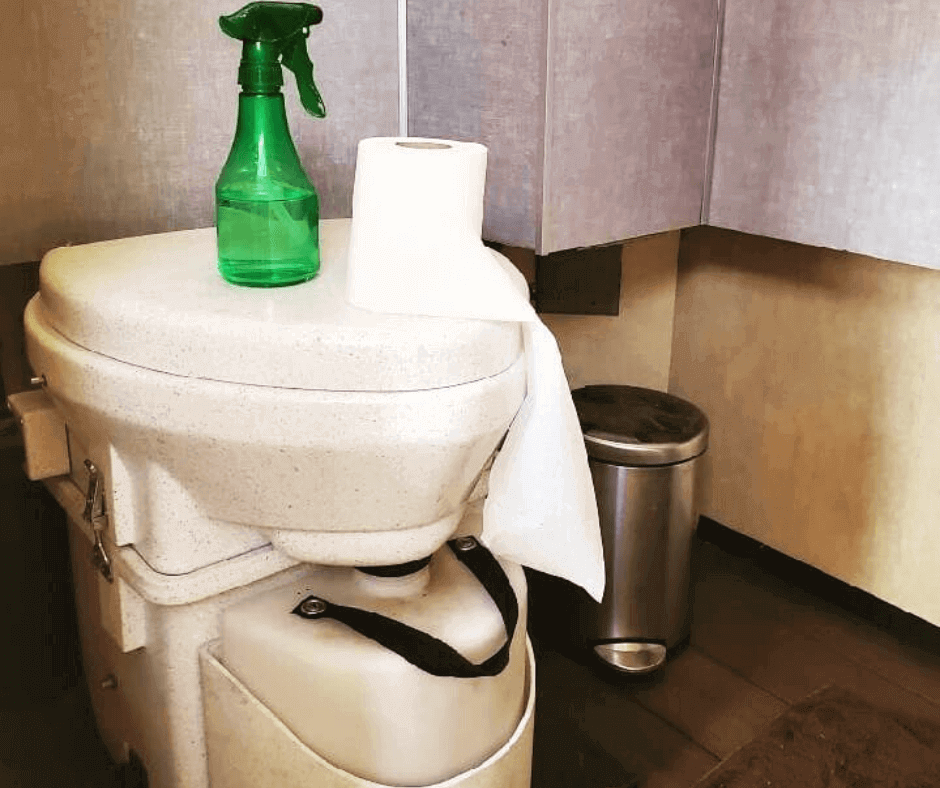
What Is a Composting Toilet?
Similar to regular toilets, a composting toilet is a product that allows you to use the restroom. However, the composting aspect of the toilet’s function doesn’t require the use of water, so there’s no flushing aspect when disposing of waste.
Composting toilets also don’t require plumbing, which helps to eliminate odor and also makes your conversion more affordable.
The lack of need for water will also help you conserve your RV’s limited water supply, which is especially important if you are camped without hookups, stealth camping in a city or boondocking.
Instead of flushing the waste away after you use it, a composting toilet separates liquids from solids with separate containers, and then processes the waste with completely natural and organic compounds.
The compound is usually an element known as humus, which you use like fertilizer.
How Does a Composting Toilet Work in an RV?
The design of a composting toilet is similar to normal toilets in that the seat is placed above a waste reservoir.
The difference is that the waste reservoir isn’t connected to plumbing, and instead has two compartments to keep solid and liquid waste separate in order to prevent odors.
When you need to urinate, you just use the composting toilet as you would use a normal one and the liquids are directed to the appropriate tank.
Then, to go number two, you’ll need to pull a lever to access the compost bin for the solid waste and add a scoop of a bulking agent such as sawdust, straw, peat mix, or coconut fibers (such as coco coir).
Finish by turning the toilet handle like you would to flush a normal toilet, and this action mixes the waste with the bulking agent.
To prevent odors, a composting toilet needs to have a small vent fan to keep the compost dry as the anaerobic bacteria in the waste and bulking agent works to break everything down.
When it’s time to empty the composting toilet, you will usually need to empty the two containers separately.
You can use a dump station at a campground or RV park for this, but there are other methods if you don’t have access to a dump station.
Usually, you can empty the liquid waste container into any public toilet (be sure to clean up after yourself), but solid waste will need to be dealt with according to local laws and regulations. We’ll go into the dumping process later on in this guide.
Why Do You Need a Composting Toilet?
If it’s not convenient to use public restrooms or rest stops when you need to use the bathroom, and you don’t have the budget or the space to build a bathroom in your RV or van, you should consider having a composting toilet.
The size, weight and portability also make composting toilet an easy and convenient option for using the restroom while living on the road.
There are some other advantages of having a composting toilet that make it a must-have addition for living in your RV or van, including:
Pros and Cons of a Composting Toilet
In addition to the advantages of a composting toilet versus a standard RV flushing toilet, there are some pros and cons of composting toilets that you should keep in mind when you’re considering one for your RV.
Some of the perks of composting toilets are:
Plumbing Is Not Necessary
Composting toilets don’t require any plumbing or pipes, so not only is there no risk of a clog, you can live more easily off grid.
With a standard RV flushing toilet, you have to have access to a dump station on a regular basis, and dumping can be a very messy process as well as a hassle.
The lack of need for plumbing also means your RV or van conversion could be a lot more affordable.
They Are More Eco-Friendly
Since there’s little to no water used with composting toilets for RVs, this style of toilet is friendlier for the environment.
You can also recycle the composted waste for fertilizer, since the toilets don’t use any chemicals and only natural and organic processing methods.
In many states, you can also simply put the composted waste in the trash, so there’s no need to go out of your way to find a dump station.
Relieve Yourself Conveniently
No one really wants to go into the woods when they have to use the bathroom, and composting toilets offer a convenient and comfortable alternative.
You can also use the toilet for weeks or even months at a time before needing to dispose of the waste, which is great for longer trips.
Keep Your RV More Clean
Standard flushing RV toilets and chemical toilets can be smelly, especially just before it’s time to dump your waste.
In contrast, composting toilets involve the use of coconut fibers, peat moss or sawdust, which keeps odors to a minimum.
Without the complicated plumbing system, there are also fewer ways for waste or smells to become trapped in your RV, resulting in a cleaner and fresher-smelling rig.
Save During the Installation and Use
Most composting toilets are very affordable, and certainly far more affordable than installing a standard toilet with a plumbing system.
Since there’s little to no use of water when operating the composting toilet, you can also minimize your expense for water.
You can also save money and enjoy more remote camping without the need to spend on campground fees for hookups.
There are still some drawbacks to having a composting toilet in your RV, and some depend on the model you choose:
The Cost May Be Higher
Although a full plumbing setup is certainly more expensive than a composting toilet, these toilets are more pricey than bucket toilets or chemical toilets.
However, the convenience and hygienic advantages of composting toilets may be worth the investment.
Installation May Take Time
If you want a plug-and-play portable toilet, you may be better off with a chemical toilet or bucket toilet.
Composting toilets are not as portable, and can take some extra time and effort to install.
They also take up a bit more space, and you will need to plan the toilet into your build design to make sure it will fit.
Electricity is Necessary
Composting toilets require a small amount of electricity in order to operate the necessary ventilation fan, so your RV or van must have an electrical system.
This won’t be an issue for most RVers and vanlifers who use auxiliary batteries and solar systems to provide the power they need.
Some Elements Are Flimsy
We’ll get more into the pros and cons of specific toilet models later in this guide, but it should be noted that some composting toilets have flimsy features.
For example, the seals might not be very durable and will require replacement somewhat regularly with long-term use.
Other elements to compare when you consider composting toilet models are the handle, electric pump, and the rinsing mechanism (if applicable).
Use and Disposal May Be a Hassle
Composting toilets usually don’t use water, but you will need to store extra bulking agent materials (such as sawdust, coconut fibers, coco coir or peat moss) in your rig.
Using the toilet also requires an extra step or two in order to compost waste properly, and you will need to dump your waste at some point.
Despite these hassles, composting toilets can be a very convenient option for easing ‘the go’ while living on the move.
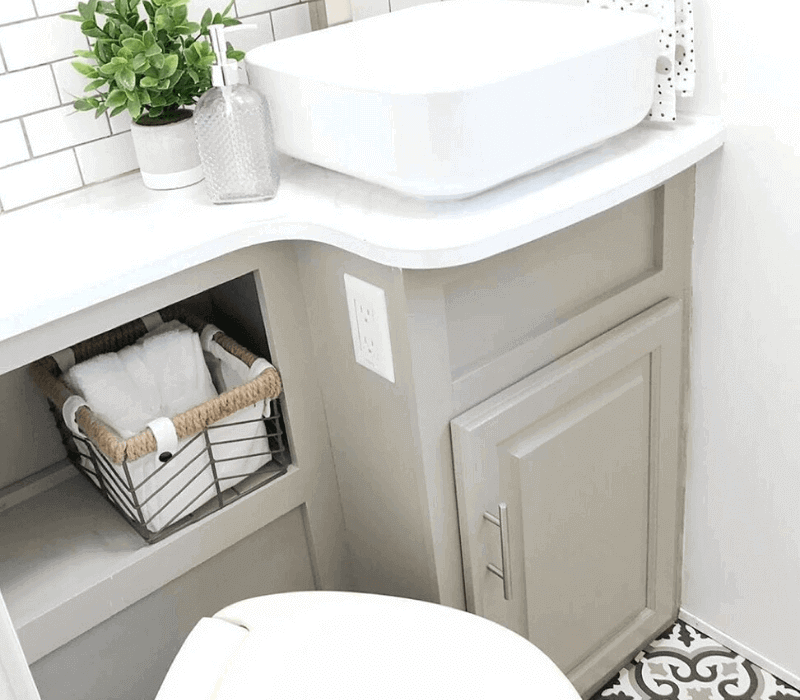
What Are the Different Types of Composting Toilets for RVs?
There are several different types of composting toilets for RVs, depending on the:
-
Composting System
-
Toilet Features
-
Product Pricing
Composting Toilet Systems
Two different systems are available for composting toilets:
Self-Contained composting toilets
consist of all of the necessary functions for use and disposal in one single unit. This type of system is most convenient for RV living because it is generally more compact.
Most self-contained composting toilets separate the liquid and solid waste into separate areas for composting and disposal to minimize odors.
Centralized System composting toilets
Have a tank outside of or underneath the toilet system. After using the toilet, your waste is moved to the tank.
There are a variety of different options for flushing and waste storage, but there are two main types of centralized systems for composting toilets:
Continuous systems have a single storage chamber for all waste (liquid and solid).
Batch type systems use two or more bins to increase the time before dumping is necessary; when one bin is full, it’s replaced with the next bin while composting occurs.
How to Choose the Best Composting Toilet for Your RV
Based on the systems and features, you’re getting closer to selecting the best composting toilet for your RV.
As you choose which composting toilet is best for your needs with RV living, there are two important things to consider:
-
Will you install a permanent composting toilet, or do you need a portable style? Some RVers like to have a more portable option, which you can remove for dumping waste and cleaning but also for more versatility in campgrounds or at hunting sites.
-
What size is best for comfort and your available space? With so many options, choosing the right size of composting toilet can be difficult. You’ll want to pick a size that fits within your RV’s available bathroom space, but avoid toilets that will dominate your living space.
Other Features To consider
The different types of composting toilets often depend on key features, such as:
Size
When you’re living in an RV or van, size is very important. Some composting toilets are larger or smaller, heavier or lighter and more portable than others.
Keep in mind that a heavier toilet may affect your fuel economy, and every ounce counts!
Durability
The best composting toilets for RV living will last for a few years, but the ones made with more durable materials may be more expensive.
Check the customer reviews to learn more about whether the toilet is built to last.
Be sure to review customer feedback about the toilet’s vent or fan mechanism, since this function performs an important role in composting the waste and reducing or preventing odors.
Tank Capacity
In addition to the size of the toilet itself, many different composting toilets have composting storage tanks of varying sizes.
Your choice will probably depend on your lifestyle, since solo travelers and those willing to empty the tank more frequently can buy a smaller tank.
Cleaning & Maintenance
No one wants a complicated or messy waste disposal experience, so the ease of cleaning is an important feature to consider when comparing composting toilets.
Even though they’re more expensive, better-quality composting toilets are often made with better materials and won’t lose integrity over time.
You don’t want a waste storage bin that is hard to open, since that could cause a spill.
If there’s a rinsing mechanism, you will likely want one with decent power to minimize the need to scrub them clean after each use.
Be sure to avoid models that require special equipment to clean, since you won’t want to have to store extra materials in your tiny living space.
Also, take note of whether the tanks separate solid and liquid waste, since separate compartments will be easier to clean and produce less odor than tanks that combine the waste.
Rate of Decomposition
The rate at which your waste decomposes will primarily depend on whether your RV composting toilet is electric or not.
Electric toilets offer quicker decomposition, while non-electric ones decompose the waste at natural rates.
However, electric composting toilets are more expensive, both with your initial investment and electricity usage.
Don’t forget to consider extra features such as the height of the toilet seat.
Some RV composting toilets are designed with standard-height seats or even elongated seats to make using them more comfortable.
Pricing for Composting Toilets
There are quite a few options for composting toilets for RVs and vans, and pricing varies a lot between models.
The good news is that you can find good-quality RV composting toilets for less than $200.
However, there are a lot of higher-quality models if you have a larger budget.
When pricing out your budget for an RV composting toilet, you should keep your specific needs in mind, since some features will carry an increased cost. These include:
-
Larger storage tanks
-
High-quality materials and hardware
-
Portability
-
Comfortable seat design and height
-
Separate waste chambers
The Best Composting Toilets for RV: In-Depth Review in 2023
We have reviewed some of the most popular RV composting toilets on the market to help you choose the best one for living comfortably on the road.
Here are the top 7 best composting toilets to consider for your RV:
1. The Most Convenient: Nature’s Head Dry Composting Toilet For RV
Nature’s Head is one of the top trusted brands for composting and portable toilets, and there are several good reasons why many vanlifers and full-time RVers choose their products.
The Nature’s Head Self-Contained toilet with Close Quarters and Spider Handle Design features a full-sized elongated seat for comfort and all stainless steel hardware.
It’s designed for easy cleaning and waste removal, with an opaque liquid reservoir so that you can gauge when it is time to empty.
The product also disassembles in seconds when you need to dump the solid waste.
However, you will have to remove the whole unit in order to dump waste, since the design doesn’t have a removable tank storage drawer.
This may be a perk, though, because these drawers take up a lot of space and this toilet is very compact in design.
This self-contained RV composting toilet is also very effective at preventing odors.
It has a built-in, low volume air circulation fan inside the toilet’s head, which recycles the air in your bathroom and keeps it smelling fresh.
The Nature’s Head Self-Contained RV Composting Toilet doesn’t use batteries, and instead uses your vehicle’s 12v electrical system. Adapters for 110v systems are available for purchase.
2. The Most Durable: Nature’s Head Self RV Contained Composting Toilet
Nature’s Head also makes a dry RV composting model with a standard crank handle. It’s very user friendly, and is easy to install.
The design is also very lightweight and compact, which is perfect for RV living or van life.
One of the most attractive features about the Dry Composting Toilet from Nature’s Head is its durability.
The toilet has been tested in a variety of environments and works well no matter what the conditions or weather outside.
Its construction is quite hardy, and with stainless steel hardware, it will last a long time.
With this toilet, the composting process is stimulated and sped up by the hand crank agitator in the base.
It’s also very easy to install, with complete instructions and even a step-by-step video to help you get it set up correctly.
3. The Most Durable: Portable Toilet Camping Porta Potty
You can still enjoy the convenience of having a toilet in your RV when you’re on a budget.
One of the most affordable and still durable composting toilets available is the Portable Toilet Camping Porta Potty from Zimmer.
It’s easy to use, flushable and leak-proof, with a detachable 5-gallon waste tank and 3-gallon freshwater tank.
This lightweight and very durable composting toilet is made with heavy-duty polyethylene, so it’s both easy to use, easy to clean and long-lasting.
It’s also very lightweight at just over 12 pounds when empty. You can easily use the porta potty from the comfort of your RV and from outside in nature, so it’s great for camping and hunting trips.
Simply dump the contents of the waste tank into a normal toilet when it’s full, and you’re done!
The porta potty has a full-sized seat to offer comfortable use for adults as well as children.
One advantage of this compact and versatile composting toilet is that it comes fully-assembled, so no installation or setup is required.
4. The Most Luxury: Sun-Mar Compact Self-Contained RV Composting Toilet
When budget isn’t an issue, the most top-of-the-line composting toilet is the Sun-Mar Self-Contained model.
It has a large capacity, which is ideal if you’re traveling with three or four people.
The Sun-Mar is one of only a few fully-composting toilets, and works with a controlled heater and fan to process waste.
Instead of separating liquid and solid waste, the heater works to drain the liquids into the tray in the base of the unit. This prevents odors.
This compact RV composting toilet is very comfortable, and even has an included detachable footrest for additional comfort during use.
Despite the price, many customers have reported issues with the product design and use.
Others have had no issues and say that it outperforms other composting toilet brands.
But due to its size, weight and the cost, the Sun-Mar may be more appropriate for a cabin or tiny home than an RV or van.
5. Best for Under $150: Porta Potti White Thetford Corp
Another excellent budget portable toilet is the composting Porta Potti from Thetford Corp. With its sleek, modern design, this toilet is a great addition to your RV.
It has thoughtfully integrated features like a toilet paper holder and carrying handle. It’s very lightweight at about 13.5 pounds.
The Porta Potti is easy to use and clean, providing an odorless and leak-proof composting toilet for RVing or vanlife.
The flushing mechanism is battery-powered, and a tank level indicator shows you when it’s time to empty the waste receptacle.
A sealed valve prevents odors from escaping and it’s easy to empty the waste tank without backsplashes or creating a mess thanks to the rotating pour-out spout.
The toilet has a large bowl and standard seat height to make ‘the go’ comfortable.
You can easily empty the waste tank in a campground toilet with waste treatment solution.
The new toilet comes with a small supply of Deodorant/Waste Digestion (about enough for 4 complete 5-gallon uses/refills).
6. The Most Portable: Camco Portable Travel Toilet
With its extremely compact size and lightweight design, the Camco composting toilet is one of the most portable toilets you can find.
It’s designed more for short-term trips, since it doesn’t have a large capacity and will likely need to be emptied every few days with more than a couple of people using it full-time.
You can go longer in between dumps if you don’t flush toilet paper.
Multiple customer reviews have raved about the odorless qualities of the toilet – even though the waste tank is smelly when emptying, you won’t smell anything when the toilet is in use.
The Camco Portable Travel toilet has a 5.3-gallon polyethylene tank and the unit weighs only 10.8 pounds (about 32 pounds when full).
It has a convenient carrying handle, and the waste tank is detachable and secured to the toilet seat with side latches.
A sealing side valve locks odors in and prevents leaks with a well-designed waste dump sliding door.
When dumping, you need to open the valve to prevent splashing, but it is very easy to empty at your campground’s dump station (emptying in bathrooms is not advised).
You’ll need biodegradable toilet chemical tablets to compost waste, and a packet of Camco’s TST tablets is included with the toilet when you buy it new.
7. Adaptable for RV Living: Separett Villa 9215 AC/DC Composting Toilet
Along with Nature’s Head, Separett Villa composting toilets are some of the best for RV living.
This model can run on either AC or DC power, making it very adaptable to living on the road.
It’s also fairly lightweight at 34 pounds, and has a long-range venting fan to effectively eliminate odors.
The Separett Villa composting toilet is very easy to install, and even easier to use.
When it’s time to dump the waste, you simply remove the compostable liner bag from the holding area and put it in your composter, incinerator, or campground dump station.
You never have to see (or smell) the inside of the solid waste bin, and the liquid hose takes care of the liquid separately. There’s no need to turn the solids bin for composting, either.
You can also buy a child seat as an accessory for this toilet, which may be useful if you have very small children. The seat is quite comfortable for adult use as well.
How to Use & Maintain a Composting Toilet
Using your composting toilet is essentially the same as using a normal flushing toilet, although different models have different techniques for flushing waste and dumping the waste tank.
To increase the time between dumps, it’s highly recommended to put toilet paper in a separate receptacle instead of the waste reservoir, since toilet paper can fill up your waste tank more quickly.
If you do put your toilet paper in the waste tank, be sure to use unbleached and low-ply toilet paper such as RV toilet paper because it’s more biodegradable.
You can minimize the need to clean the composting toilet bowl (and any odors from the bowl) by spritzing the inside of the toilet after each use.
Fill a spray bottle with a 50/50 mixture of white vinegar and water for this purpose. You can add essential oils or lemon juice for a nice, citrusy scent.
How To Install a Composting Toilet In Your RV
When you purchase a new composting toilet, the product comes as a complete unit.
You won’t need any special tools to install it, so just follow the included instructions to place each part correctly.
Some toilets even arrive already set up, with no installation required. All composting toilets have brackets or features to secure and anchor the unit in place when you’re on the move.
Many RVers setting up a composting toilet have found that the trickiest part of the installation is preparing the space within their RV so that it’s ready for a composting toilet.
Keep in mind that the toilet probably won’t be a mobile unit, and it will need an exhaust hole or vent and access to a 12v fan connection in order to function properly.
The exhaust will require you to cut an opening in the floor or sidewall of your RV. The ventilation system needs to be connected before you can use your composting toilet.
Be careful when setting it up because an improper installation could let bugs get in later. If you’re not sure, it’s worth it to pay a professional.
How To Prepare The Toilet’s Compost
If your composting toilet doesn’t use biodegradable bags for removing waste, you will need to prepare the bulking agent that stimulates the composting action.
Most people use peat moss, coconut coir or fiber, or sawdust. Coconut coir comes in bricks that you must break into smaller pieces for use in the toilet, while peat moss and sawdust comes in bags that you can scoop from for adding to the toilet after use.
Always follow the composting instructions for your particular toilet unit, since improper use could cause problems or leaks.
-
Step One: Mix the bulking agent with a small amount of water until it is damp. It shouldn’t be wet or dripping; if you use too much water, mold or leaks may occur.
-
Step Two: Scoop the bulking agent into the composting reservoir or waste bin until it is in contact with the rotating lever.
-
Step Three: Secure the toilet seat and lid to the composting reservoir, and it’s ready for use!
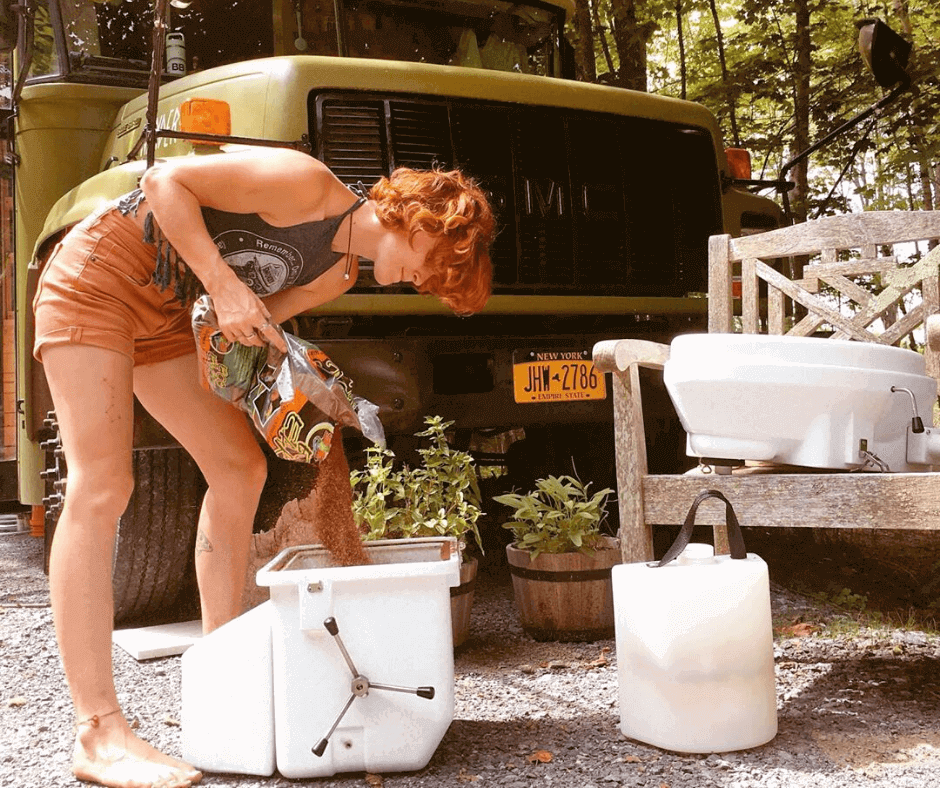
How To Dump Your Composting Toilet Waste
Dumping the waste from your composting toilet will depend on the model you choose, but for many composting toilets, the solid and liquid waste is kept separate so there’s no sewage.
For most models, you can go for several weeks between solid waste dumps, although the liquid waste will need to be dumped every few days with regular use.
To dump the liquid waste, simply remove the liquid container or tank and dump it into a regular toilet or dump station.
It’s not widely acceptable to empty the liquid bottle in nature, but if you must, follow these tips to do so with respect to others and the environment:
-
Empty it in places that are not widely used by others
-
Empty the bottle on a dirt road or over soil so that it is more easily absorbed
-
Empty the container in different areas and spread out if you are boondocking in one location for a longer period of time
-
Don’t empty the bottle on someone’s property, into a storm drain, or within 200 feet of natural water sources
To dump your solid waste, always follow the instructions included with your composting toilet and be sure to follow local regulations.
When in doubt, just use an authorized dump station. In some cases, you can dump the solid composting waste into a composting bin or a trash bag and then put it in a dumpster, but this isn’t always the case.
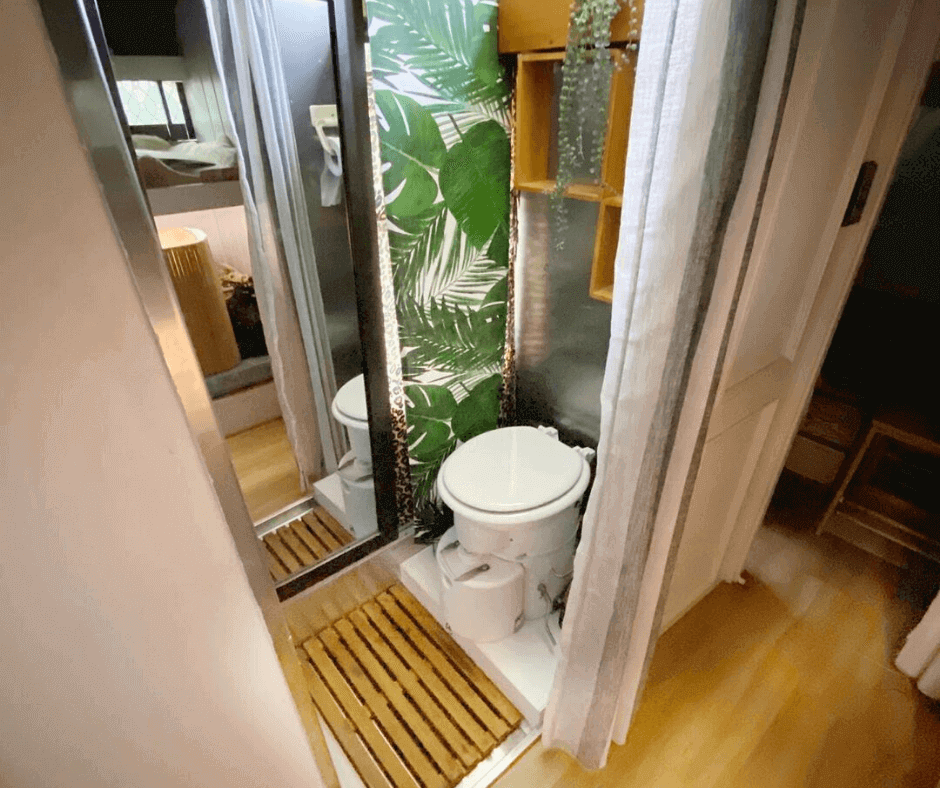
Composting Toilet FAQs
There are some common questions RVers ask when it comes to composting toilets:
Q: Do Composting Toilets Smell?
A: If you don’t follow the instructions for using your toilet or you don’t maintain or clean it properly, the toilet will stink.
However, most composting toilets are designed to be nearly odorless, and proper maintenance will prevent any odors from developing.
Q: Why Should I Consider a Composting Toilet for my RV?
A: Composting toilets are an excellent, eco-friendly alternative to regular flushing toilets, and use very little (if any) water.
This type of toilet impacts the environment far less than normal toilets, and won’t require a full plumbing setup in your RV.
There are lots of ways to save with a composting toilet; they are smaller and more compact to save on space, as well.
Q: Are Composting Toilets Difficult to Install and Set Up?
A: Some toilet models are more difficult or time-intensive to install in your RV, but most are very easy to set up.
Many RVers have found that the most challenging aspect of setting up a composting toilet was making modifications to their RV, and not the toilet installation itself.
Conclusion: Which Composting Toilet is Best For Your RV?
The most convenient, durable and RV-compatible composting toilet is the Nature’s Head Self Contained Composting Toilet.
It’s odorless, easy to use, and is made with very high quality materials to last for years. It also doesn’t use batteries, and instead uses your vehicle’s 12v electrical system.
For a more budget-friendly alternative, consider the Porta Potti from Thetford Corp. It’s clean and very easy to use, and does an excellent job neutralizing odors.
For the function and the sleek design, the Porta Potti is an ideal composting toilet for less than $150.
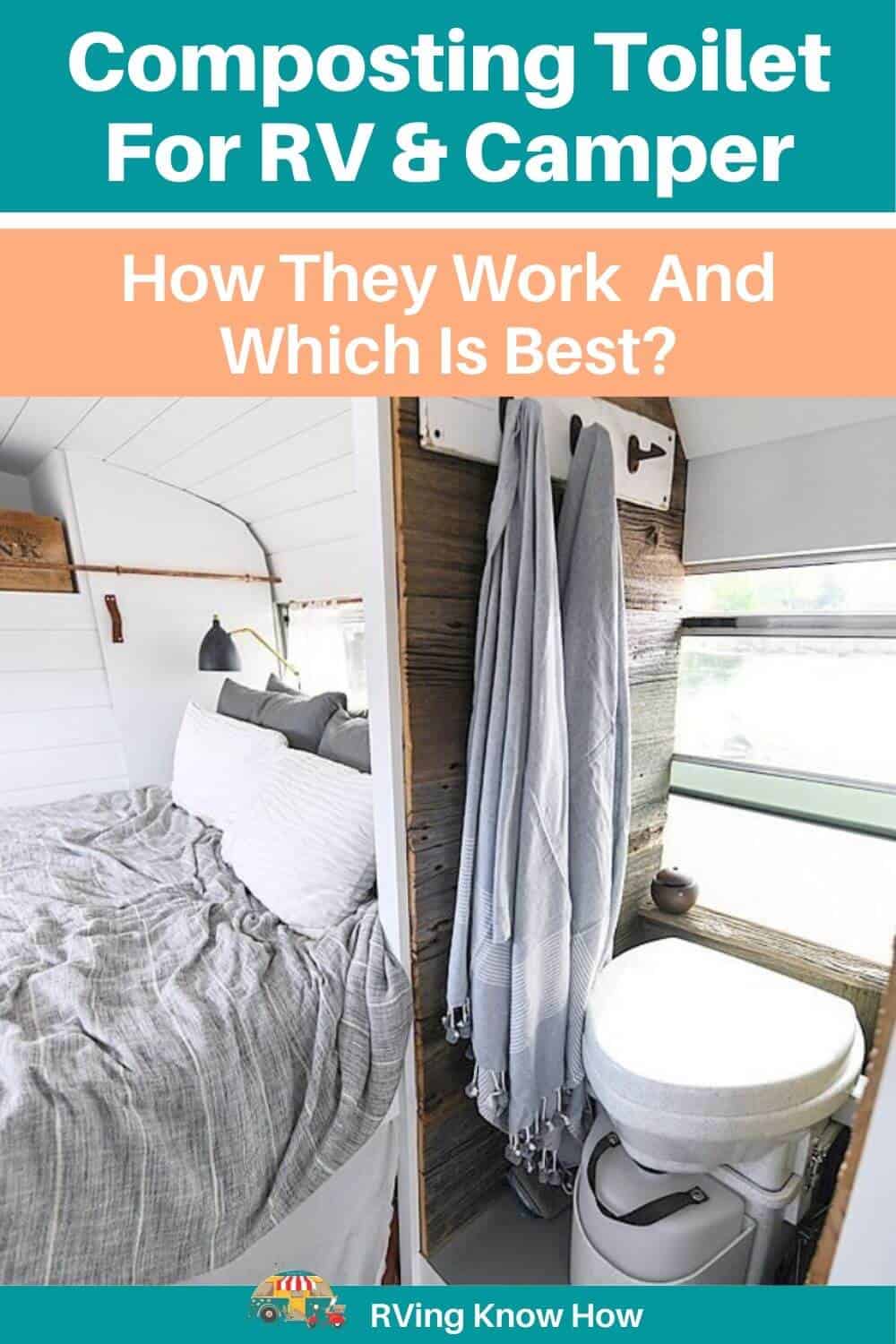

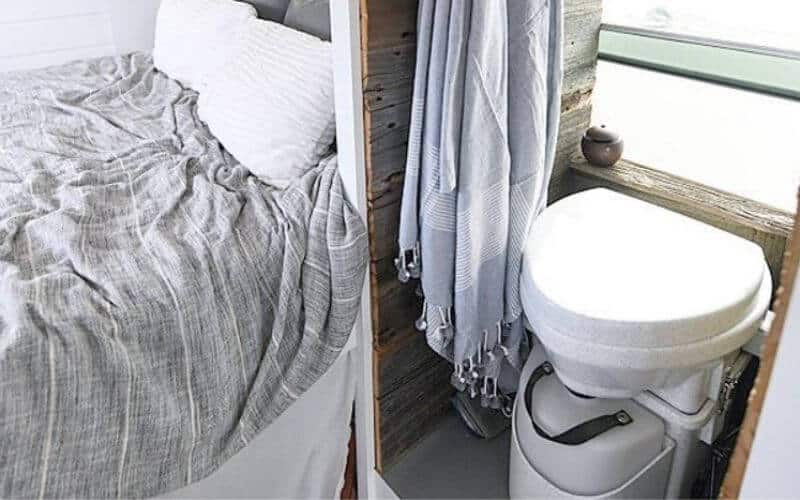
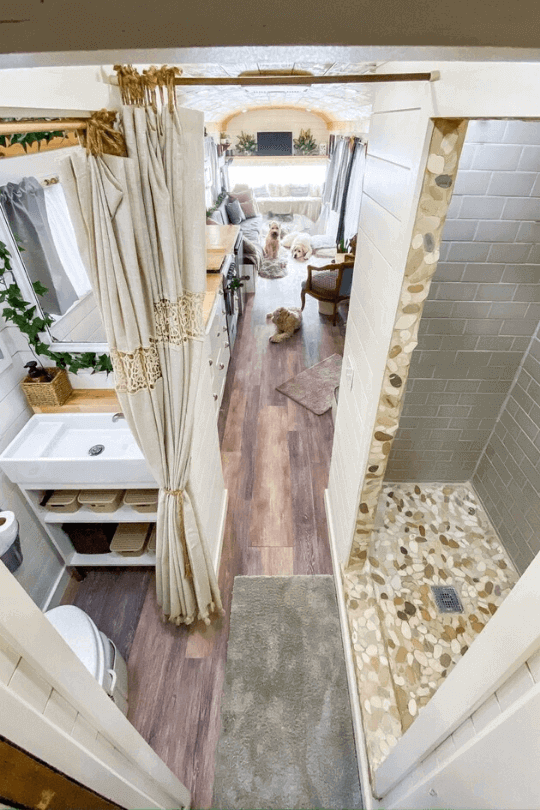

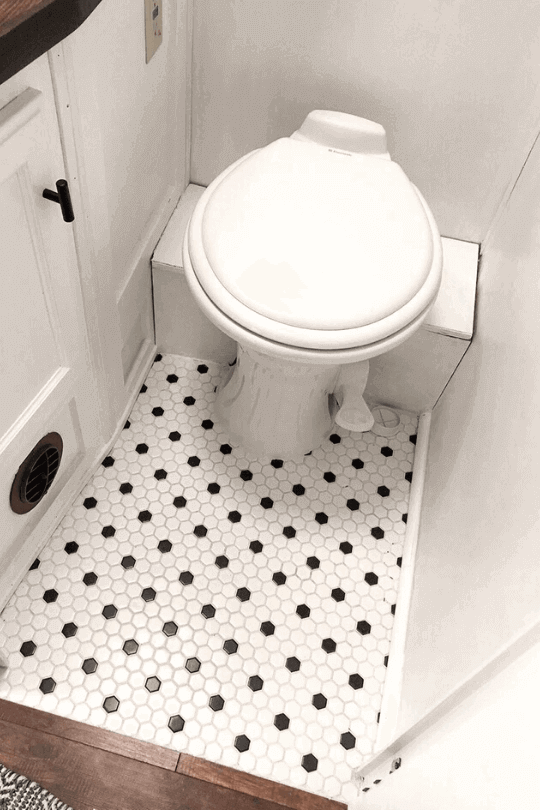
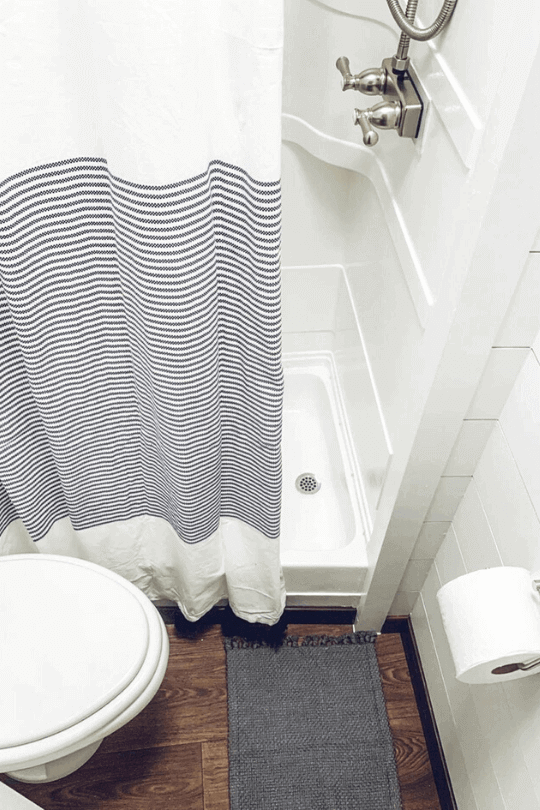
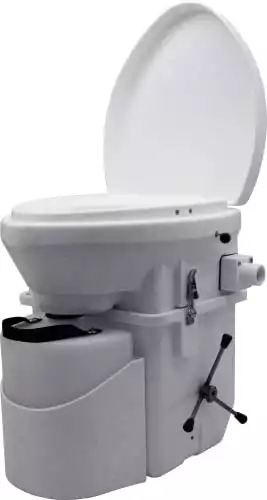
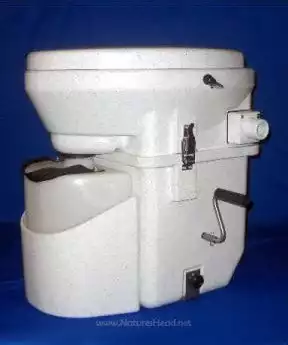
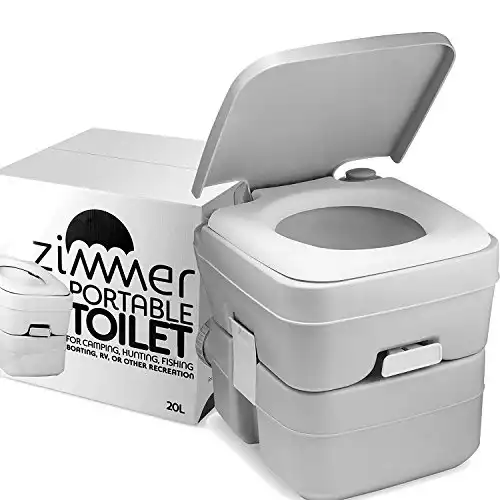
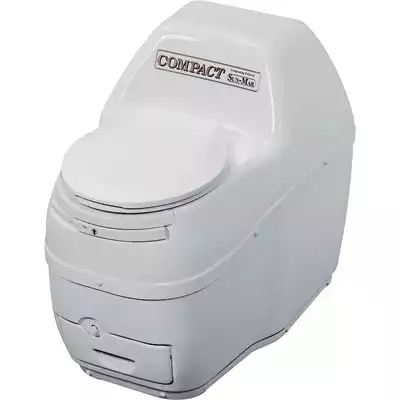
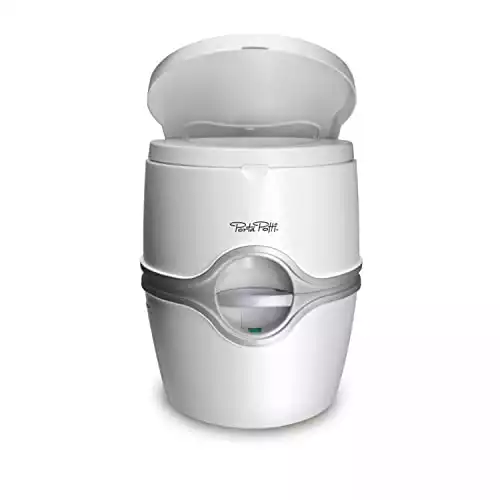
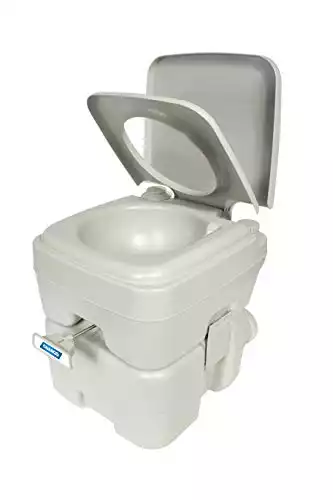
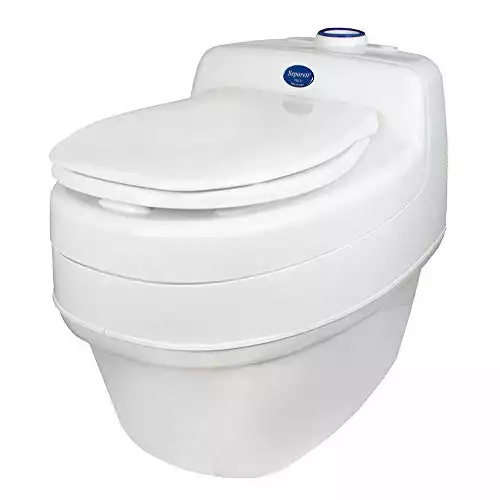
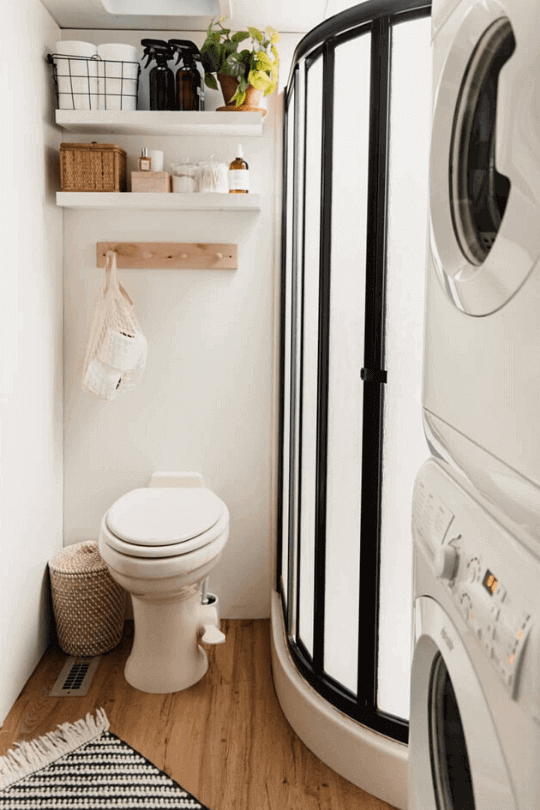


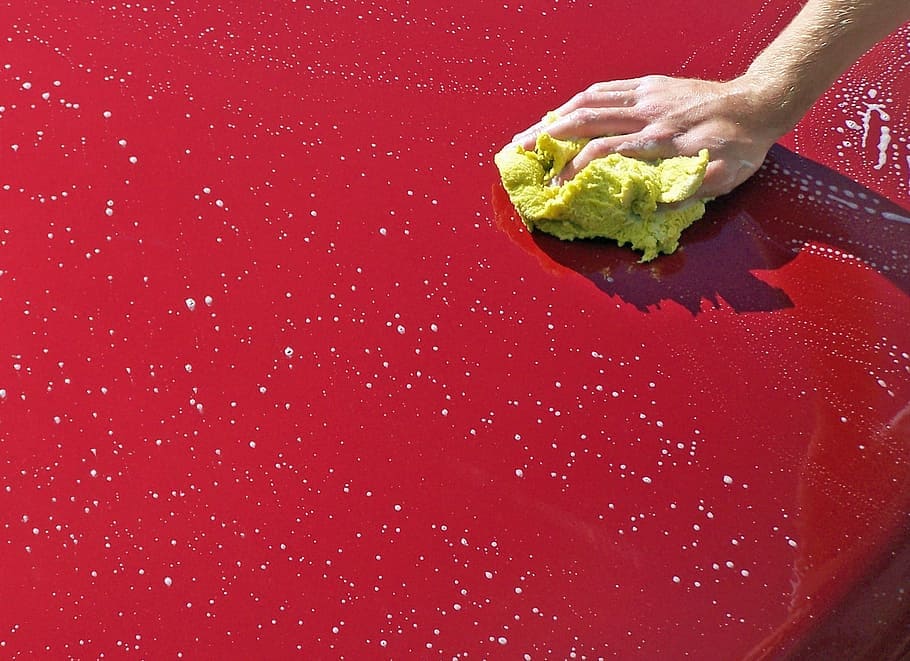
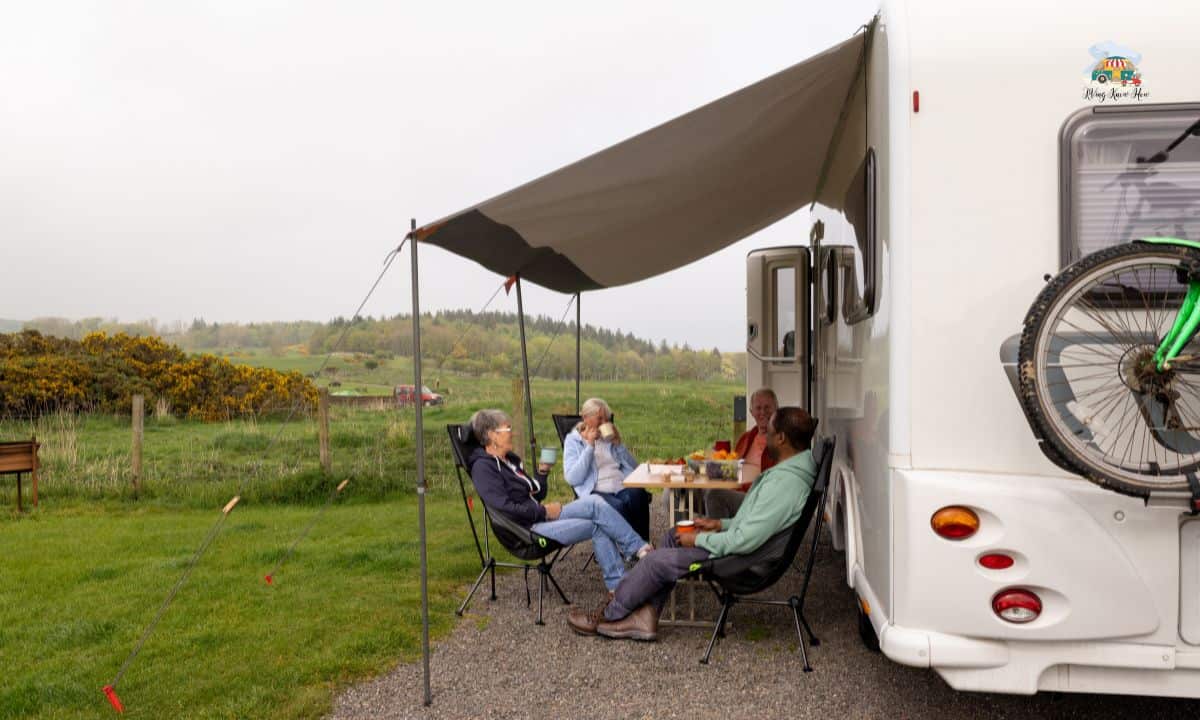
![11 Best RV Washer Dryer Combos of [currentyear] for Efficient Laundry on the Go 22 10 Best RV Washer Dryer Combos To Do Laundry While Traveling](https://www.rvingknowhow.com/wp-content/uploads/2019/10/10-Best-RV-Washer-Dryer-Combos-To-Do-Laundry-While-Traveling.jpg)
1 Comment
David Cassells
2 years agoIf you use your caravan for say 3 or 4 days then put it away for a while, what do you do with the composting toilet?